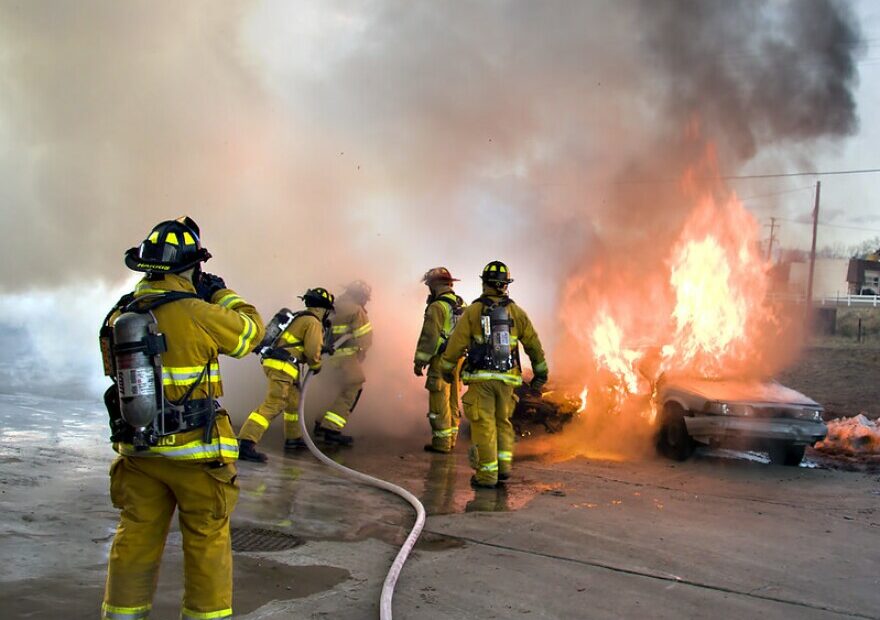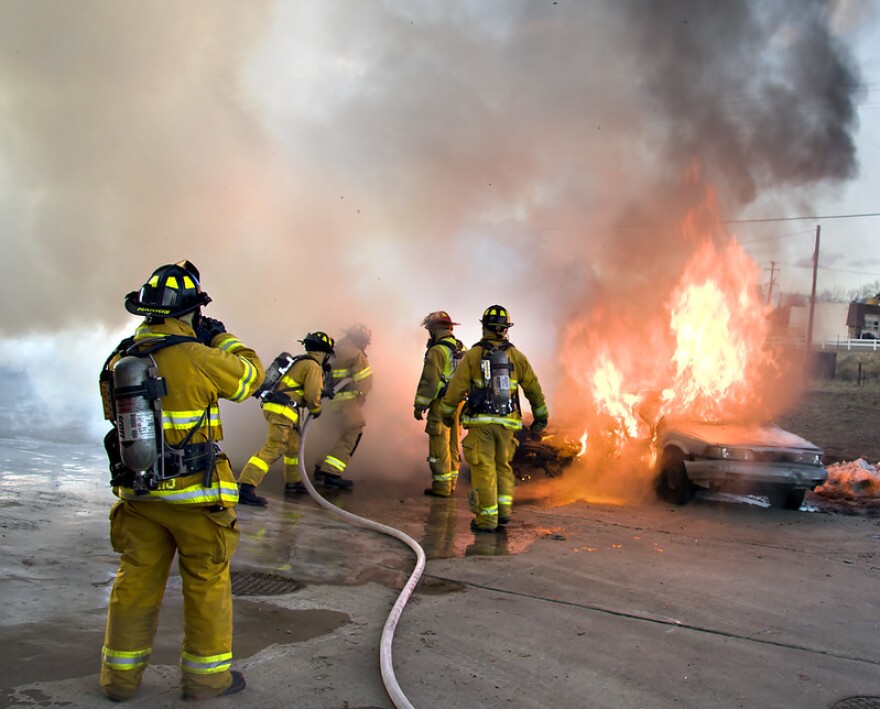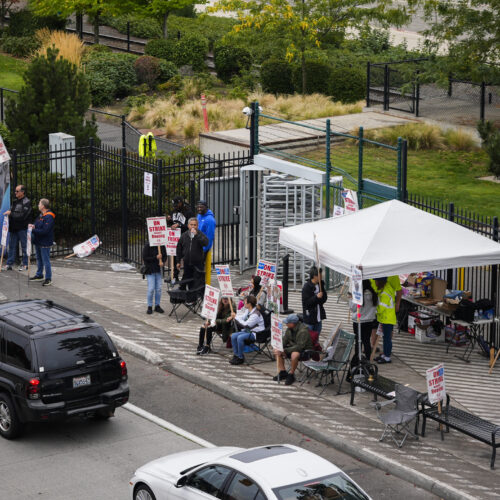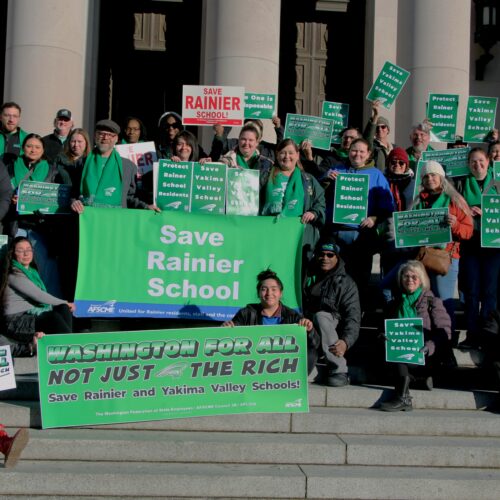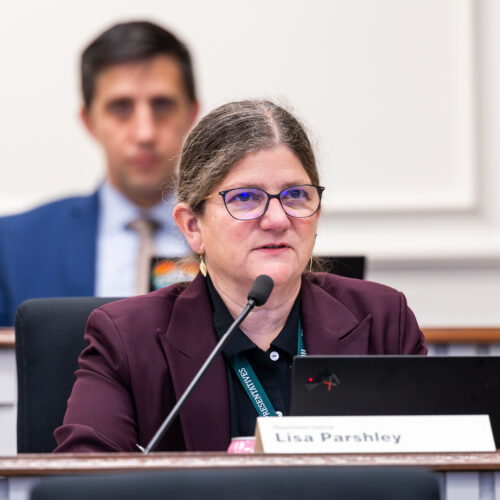A new bill in the Washington Legislature could help speed the process for state regulators to restrict toxic chemicals in firefighting gear.
“Something we didn’t realize until it was too late is that the gear that was designed to keep us safe is actually poisoning us,” said A.J. Johnson, legislative liaison for the Washington State Council of Fire Fighters and a firefighter in Edmonds, Washington.
Firefighters already are diagnosed with certain cancers at a higher rate than the rest of the population, according to a study from the National Institute for Occupational Safety and Health.
These toxic chemicals, called PFAS, or Per- and polyfluoroalkyl substances, are known as forever chemicals, according to the Washington Department of Ecology. They never disappear and build up in the environment and in people. The pervasive chemicals make products water- and oil-resistant and are found in everything, including floor coverings, cookware, cosmetics, and clothes.
However, PFAS toxicity is not well understood. In laboratory animals, studies have shown PFAS exposure affects liver function, reproductive hormones, and the development of offspring.
In people, some research has found probable links in PFAS exposure to a variety of health issues, including high cholesterol, reproductive and development issues, and certain cancers, according to the Department of Ecology.
In 2018, Washington became the first state to ban PFAS in food packaging and firefighting foam, which is the suspected source of PFAS in Washington’s drinking water, according to the Department of Ecology.
Moreover, according to the department, unhealthy amounts of PFAS have been found in drinking water in Airway Heights, North Whidbey Island, Issaquah, and at Joint Base Lewis-McChord.
Even though Washington was the first state to ban several PFAS products, some lawmakers and advocates said the process to regulate other sources of PFAS would take too long.
This summer, The Seattle Times reported on a study that found PFAS in the breast milk of 50 women living in Puget Sound. (Johnson said his wife, who is a middle school counselor, participated in the study.)
After reading the article, Rep. Liz Berry, D-Seattle, said she wanted to speed up the process to regulate PFAS in Washington.
“As a mom of two small kids – I’ve got a 5 year old and a 2 year old – I breastfed both of my babies. I was terrified when I read the study,” Berry said.
Without this update, Berry said, other PFAS sources potentially wouldn’t be banned in Washington until 2030.
Shirlee Tan, senior toxicologist for the Seattle and King County Public Health Department, said the bill would streamline safer products for the state.
“H.B. 1694 will prevent health impacts and costs. It will protect sensitive populations and communities disproportionately exposed to environmental and other stressors,” Tan said.
For structural firefighters, Johnson said, the sooner toxic equipment can be replaced, the better.
After Washington’s 2018 law, manufacturers of firefighters protective gear, known as bunker or turn-out gear, had to disclose whether the materials contained PFAS.
Each manufacturer that sent information to the Washington Department of Ecology reported PFAS in its proprietary protective equipment, which can cost between $5,000 to $7,000 new, Johnson said. Most professional structural firefighters have two sets of bunker gear, he said.
A 2020 study found indicators of PFAS in the moisture barrier and outer shell of new and used protective gear.
The chemicals make firefighter’s protective gear more water-resistant, Johnson said.
“Thirty or 40 years ago, before the invention of this stuff, we just went into fires and got wet. Your gear was really wet after fighting a fire,” Johnson said. “Before we knew about PFAS, this was a really good invention.”
As the gear heats up, more of the chemicals are released for the firefighters to breathe. In addition, Johnson said, firefighters are at risk of breathing in even more toxic chemicals inside burning buildings – PFAS are found in couch cushions, carpets and furniture that could all burn.
Moreover, he said, firefighters wear their protective equipment when they respond to a variety of calls such as car wrecks. The gear also sits next to firefighters as they’re responding to medical calls.
“The gear is right next to us. You’re within five feet of it all of the time,” Johnson said. “We just would like to have another option where we’re not exposed to it.”
Gear manufacturers are making equipment that doesn’t contain PFAS, Johnson said during testimony at a House Energy & Environment Committee public hearing.
“That’s what we would like to move toward,” Johnson said of the Washington State Council of Fire Fighters, which represents around 8,000 firefighters.
At the public hearing, Tim Shestek, with the American Chemistry Council, said H.B. 1694 needs to be more specific.
“Not all chemicals are the same. Not all uses and exposures are the same,” Shestek said.
As for protective firefighting gear, Johnson said PFAS exposure should be limited quickly.
“I know the people I work with, if the option was, ‘Oh, I’m going to be exposed to this dangerous chemical, or I’m going to get wet.’ I think people would just choose getting wet,” Johnson said.

